One of the things I love about Ecuadorian chefs is that most seem willing to share their recipes. That’s how I came to make Bolón de Verde – literally translated as balls of green but more appropriately called green plantain dumplings.
Our First Bolón de Verde
A young Argentine who was cooking and groundskeeping at the Chirije Lodge made us the most delicious breakfast of green plantain dumplings. These round balls of mashed plantain wrapped around a square of fresh cheese were deep-fried so that they were crispy on the outside and soft and tender on the inside. They were yummy and I just had to make them for ourselves!
When I asked our chef for the recipe, he gave me a list of ingredients, some basic instructions, and voila! I am now competent at making them.
What is a Green Plantain?
When I first started talking about green plantains online, I found out that my family in England had never heard of plantains. It made me realize that there is a good chance that many Americans don’t know what they are either.
Simply called verde in Ecuador, a green plantain looks like a big banana. While they come from the same family, they are a different beast. Green or unripe plantains are very hard, almost like a potato. Peeling them leaves a sticky residue on your fingers that I was only able to remove by rubbing a little vegetable oil on my hands before washing them. After peeling, they must be cooked in order to eat them.
How Many Ways Can You Eat A Green Plantain?
Here in Ecuador, cooked green plantains are often made into a masa or dough to form pancake-shaped tortillas or dumplings like the bolón de verde you’re reading about today. But they are also fried into chips, called chifles. Or into patacones which are round slices of plantain that are fried, flattened with a spatula, then fried again. They are a perfect complement to ceviche!
Platano Maduros or Ripe Plantains
A relative of the Green Plantain is a yellow, ripe plantain. There is some debate as to whether the two are a different species or if it is one species that can be eaten both immature and ripe. We’ve had our green plantains turn yellow so we’re in the latter camp.
In Ecuador, ripe plantains are called maduros. I have only seen them served cooked, usually pan-fried until meltingly sweet. They are dessert-like but are most often served as a side dish to a main meal like hornado. They are delicious!
As we learned, if you let your green plantains sit on your counter for too long, they will become ripe. Don’t get rid of them! Experiment and try cooking them too. We had them while camping – peeled then wrapped in foil with a little brown sugar and lime juice, topped with dried fruit and nuts, placed in the embers of the campfire for a half hour or so. Delicious!
I’ll make sure to track down more plantain recipes in the future, from both green and ripe plantains. In the meantime, I hope you’re able to find the fruit in order to make Bolón de Verde.
Bolón de Verde or Green Plantain Dumplings
Ingredients
- unripe plantains – called verde or platano verde in Ecuador (do not use green bananas but look for actual plantains; check your local Latin American Market if you can’t find them at the regular store)
- 1 large or 2 small onions
- 2 cloves of garlic
- fresh cheese or Queso Fresco (often used in traditional Mexican and Central American cooking so check your local Latin American Market)
- salt and pepper to taste
- neutral oil for sauteing and frying
Cut and peel the plaintain.
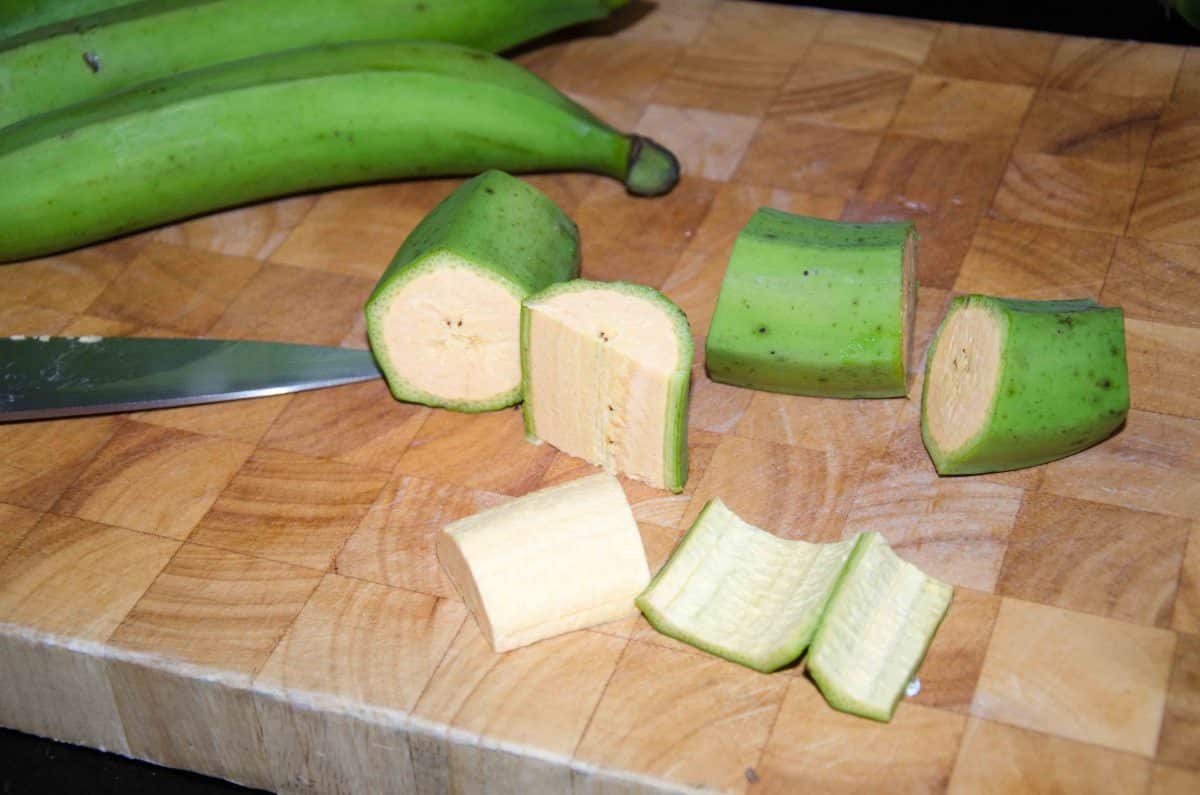
Place plantain in pot and cover with water.

Bring plantains to a boil and cook until soft – about 1/2 hour though I’ve been told that they can be cooked longer. I have a feeling altitude makes a difference. Keep checking by inserting a knife. When it goes in easily, you’re ready to go.
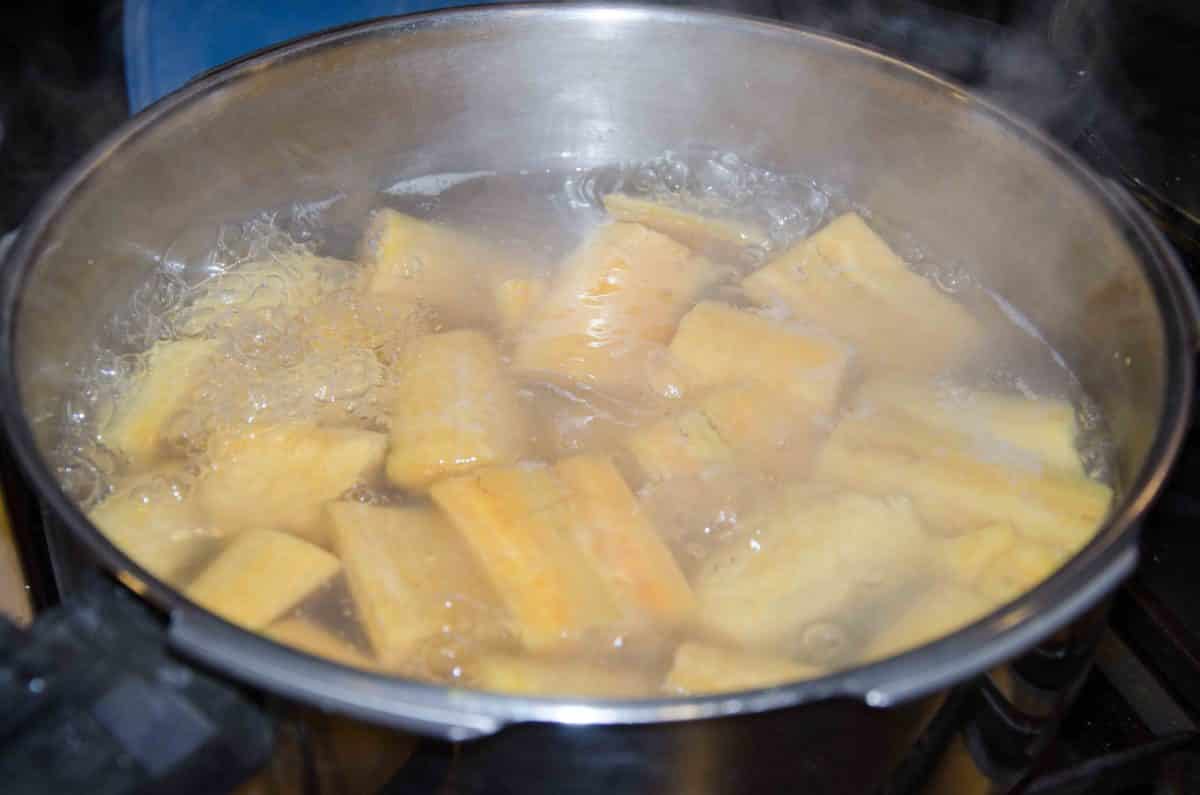
Drain the plantains and let cool slightly before mashing.
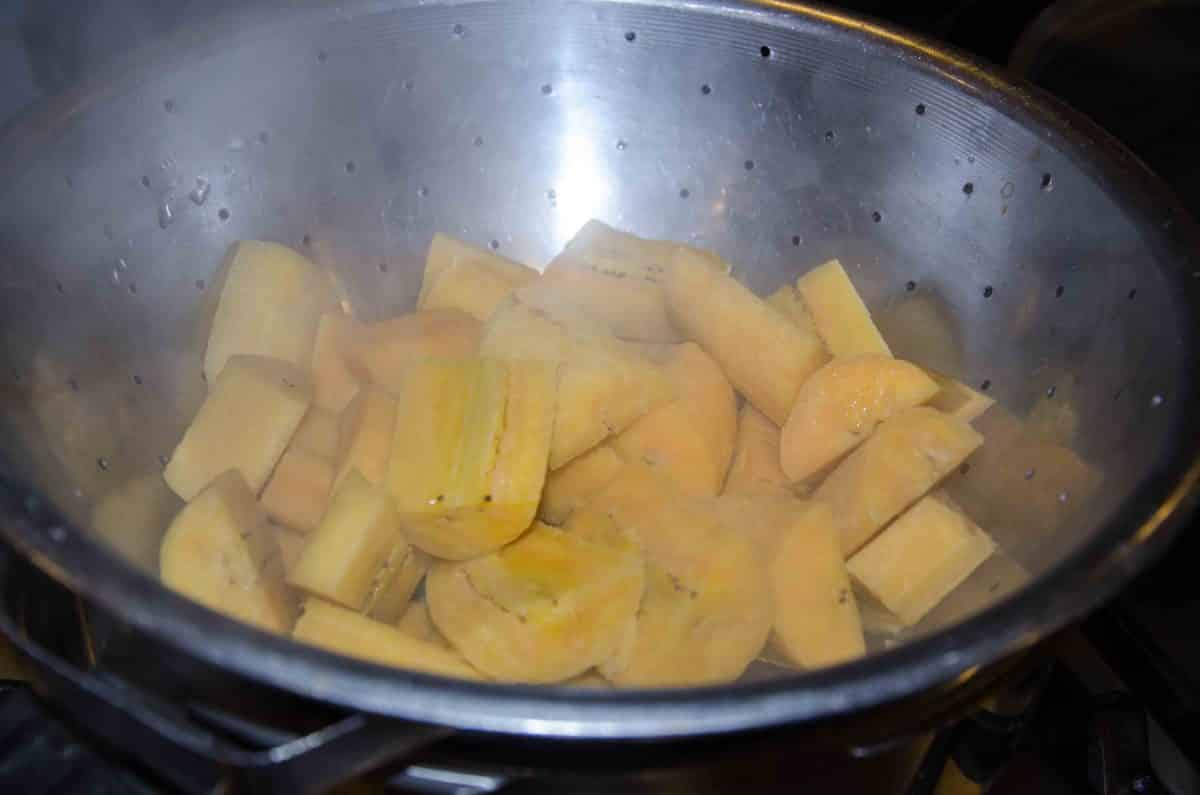
Mash away. My mash looked lumpy and not like mashed potatoes but it held together just fine.
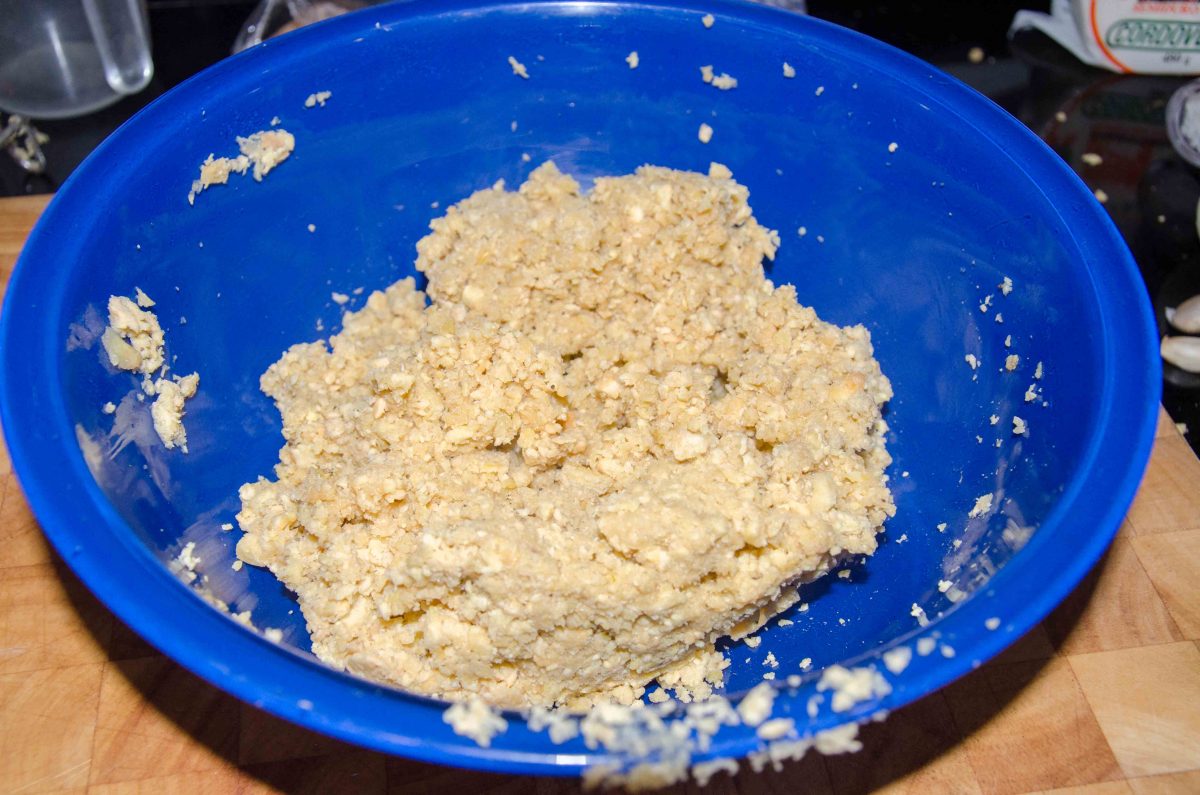
Add onion and garlic that you have chopped and fried in a saute pan until soft. If you have achiote oil in the house, feel free to use it for sauteeing. It will give the onions a yellow hue. Season this mixture with salt and pepper.
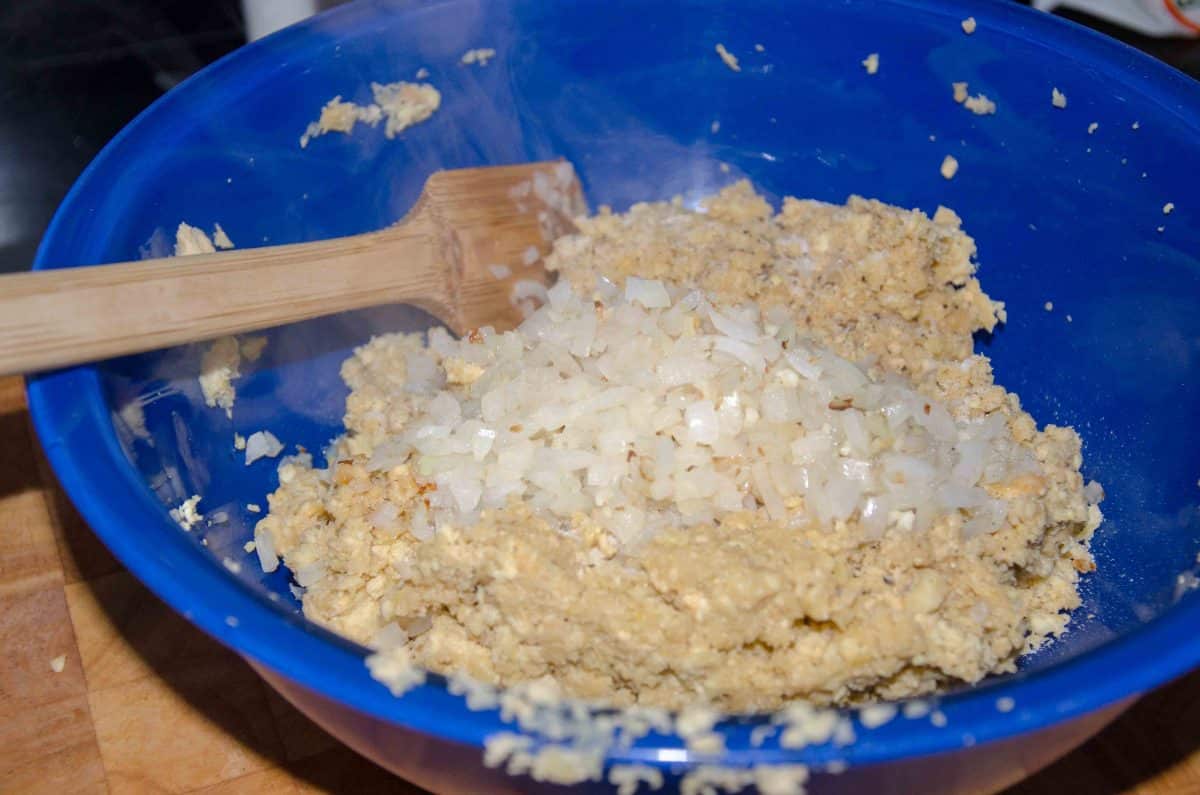
Take enough dough to form a ball, about the size of a small tomato, and insert a cube of fresh cheese.
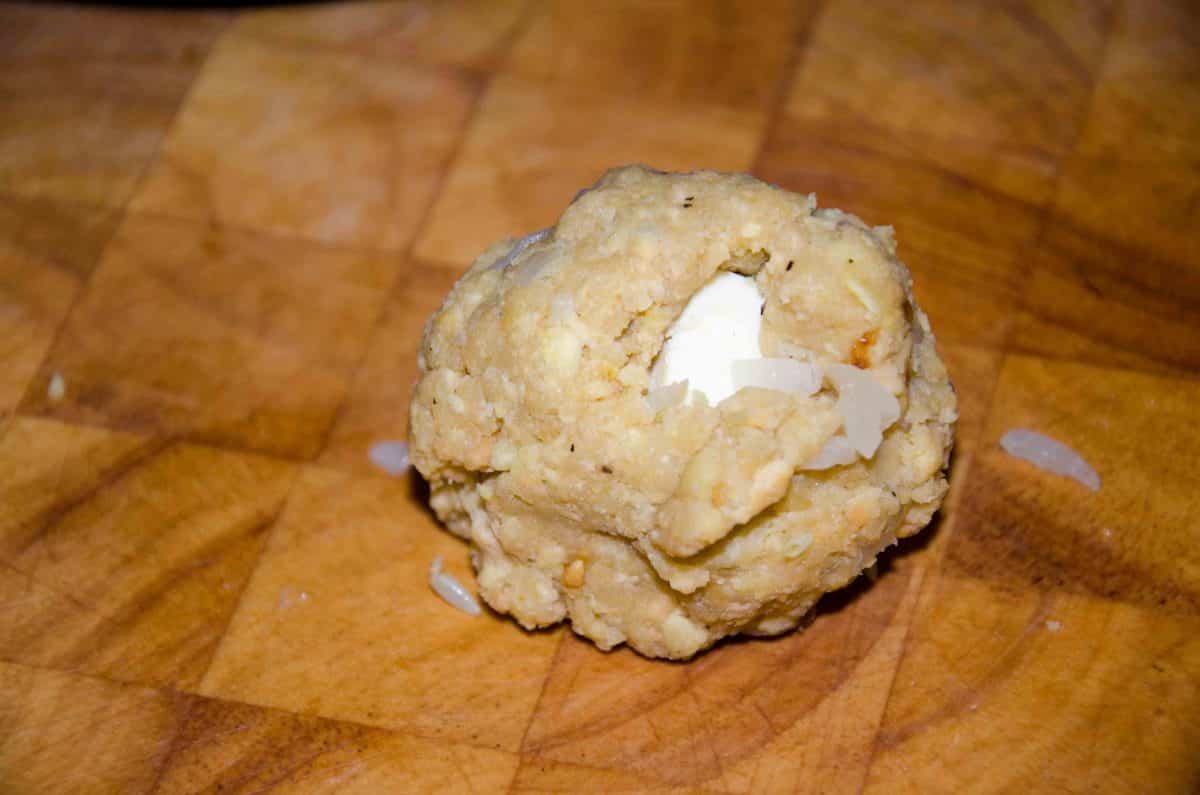
Keep forming balls until all the mixture has been used. This recipe should have made 8 but my last ball didn’t want to hold together. Figure about two balls for every plantain used.
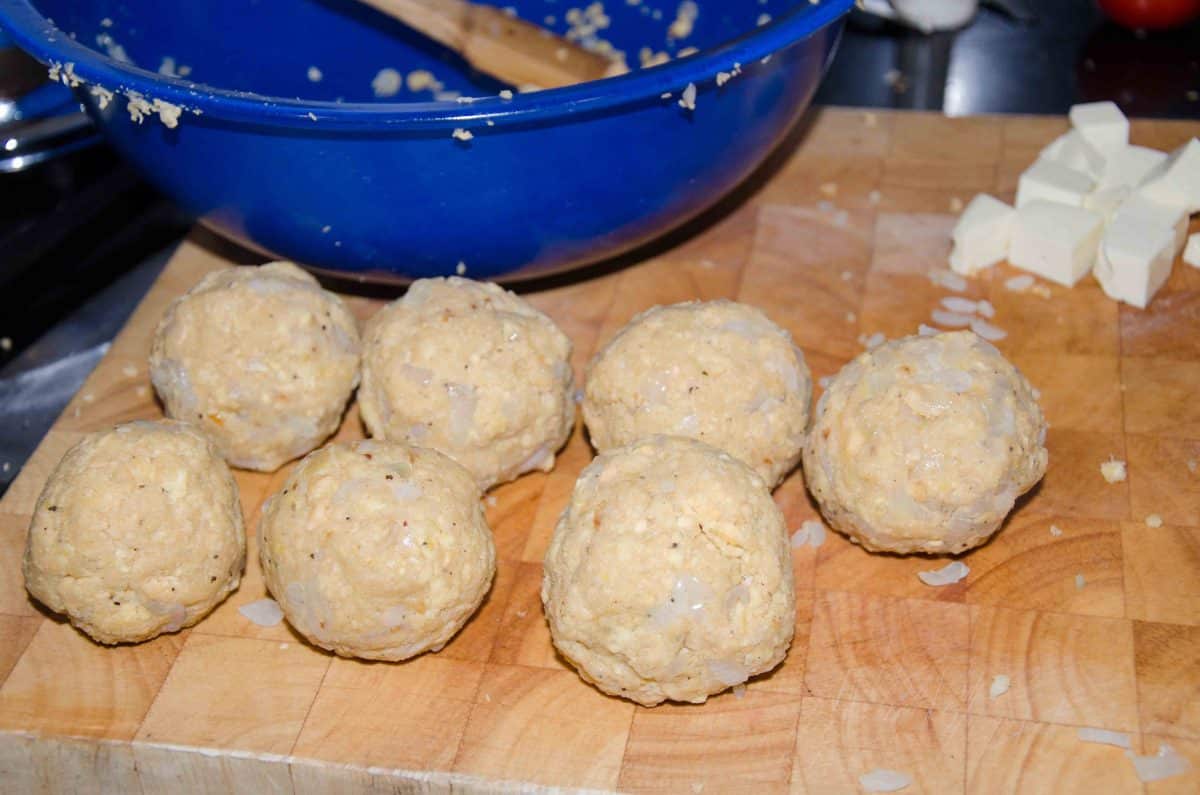
Heat a thin layer of vegetable oil in a pan. Cook until the dumplings are browned on all sides. These can also be deep-fried if you have the proper set up.
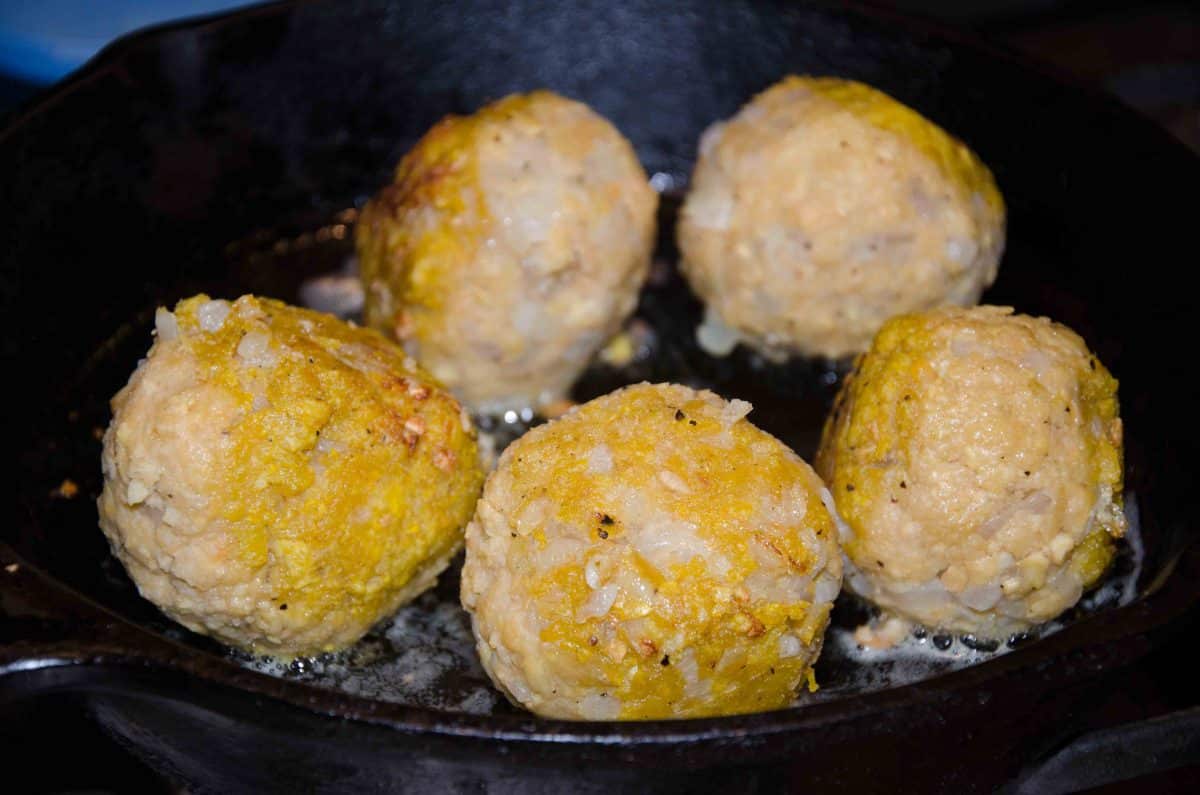
Voila! Delicious Green Plantain Dumplings!
Our favorite way to eat a crispy Bolón de Verde is with a fried egg and a little aji on the side. But experiment and let me know how you like them best. Buen provecho!
Since writing this article, we’ve learned that you can also add smaller bits of cubed cheese and/or pieces of fried pork called chicharrón to the dough. In the United States, bacon bits could be a great addition.

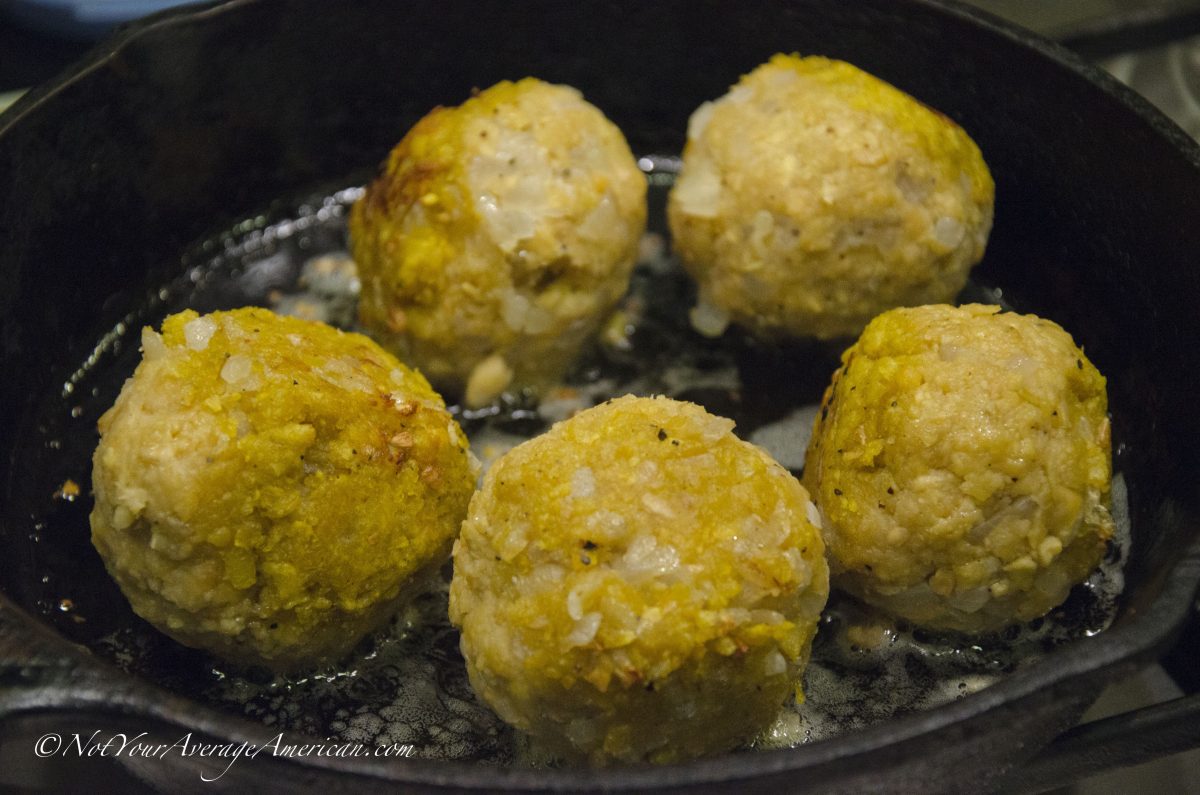
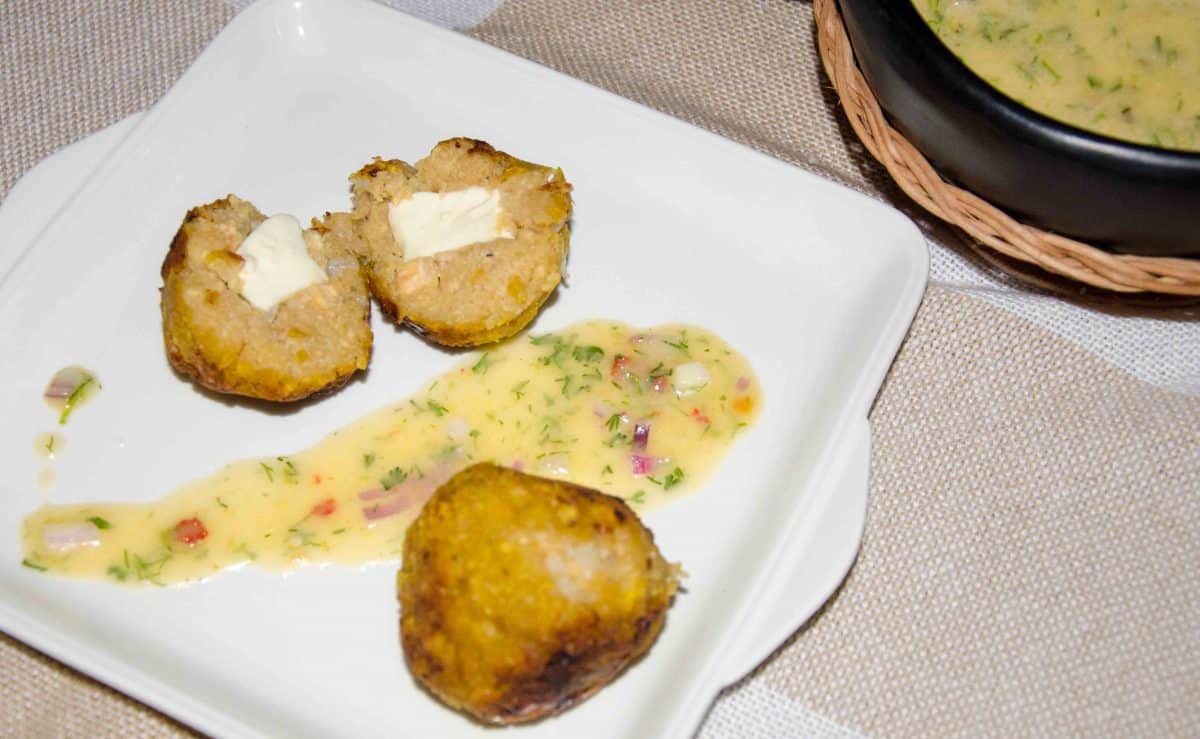
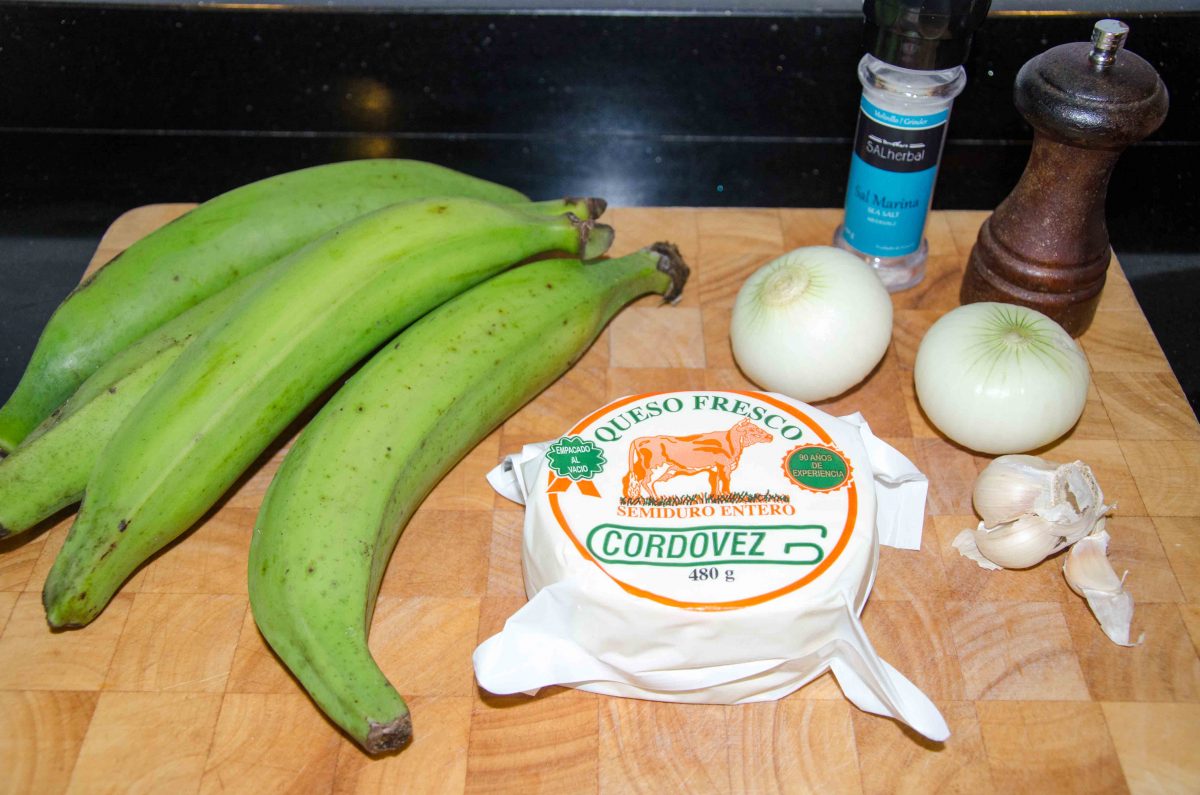
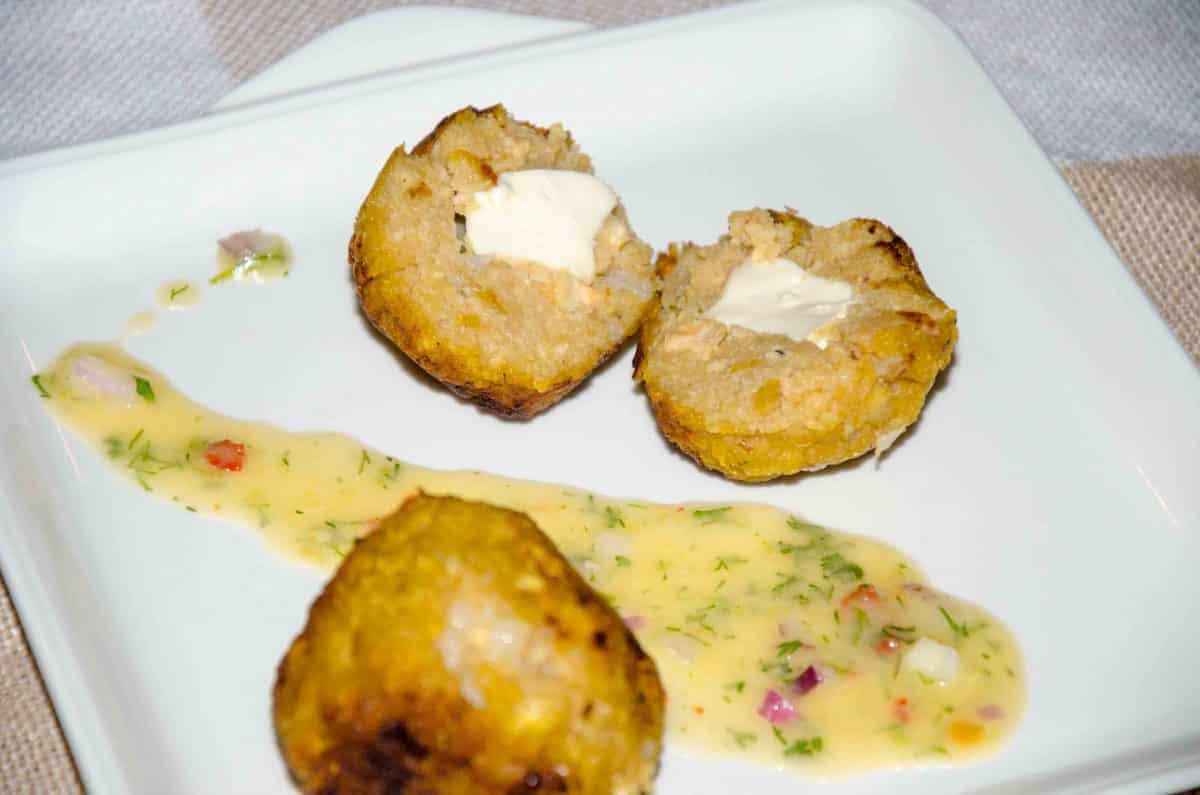


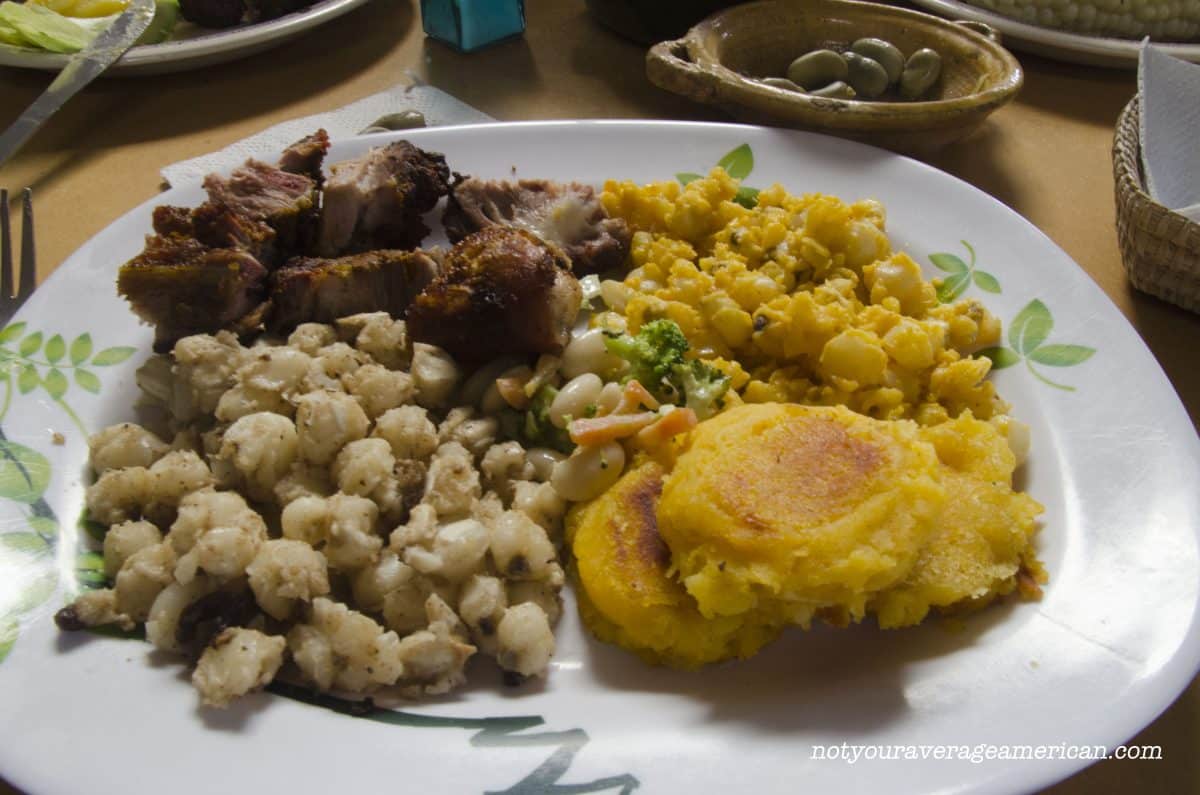
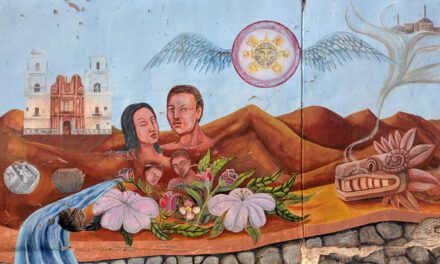











Great explanation! There’s another way to cook bolones, you first make patacones (thick slices lightly fried, then flattened with the end of a glass, then fried again; then you break them and form the ball with the cheese and chicharrón cubes, then oven it a bit. They are Cruz n by and lovely, try it! Also there are more ecuadorian dishes that use green plantain: tigrillo, green plantain balls filled with vegetables soup, verde tortillas, verde empanadas, and the list goes on! 💕 in the UK you can order plantain in Amazon if you can’t find it.
Thanks for all your wonderful suggestions! We love tigrillo and make our own version a few times a month. It’s a power-packed breakfast, for sure! We’re fortunate in Portland, Oregon as we can get green plantains most weeks at our regular grocery store. If only we could get them to store green plantains separately from maduros!